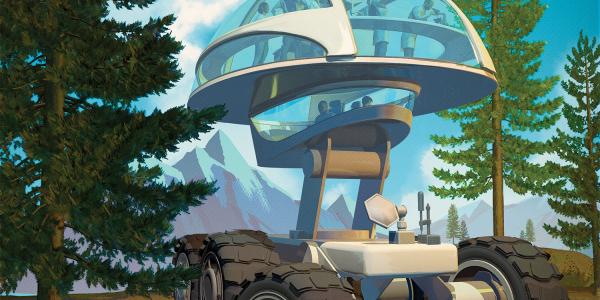 The brewers are happy to give away dirty water. The PhDs are happy to take it.
The brewers are happy to give away dirty water. The PhDs are happy to take it.
The plan came together — where else? — at the bar.
Last April, over pints at Backcountry Pizza in Boulder, Tyler Huggins (PhDCivEngr’16) and Justin Whiteley (PhDMechEngr’16) were honing their idea for “growing” a battery from beer — specifically, from the wastewater discharged by breweries. If successful, their invention would offer a new model for clean energy storage while reducing beer makers’ costs.
The two engineers faced a crossroads. Their related work as CU Boulder doctoral students was promising, but with graduation near, the job market beckoning and research yet to do, they had to decide: Could they afford to go all in on building a better battery?
“There was a lot of soul searching,” said Whiteley, who’d been considering a job offer with an established battery start-up. “We realized we had to be OK with pursuing what’s uncomfortable.” Six months earlier, Huggins had cold-called Se-Hee Lee, an associate professor in CU’s mechanical engineering department, to tell him about an idea for a new kind of electrode — the central component of any battery.
Most electrodes are made from carbon-based minerals, a finite resource. Huggins wanted to harness a better raw material, something biological and infinitely renewable.
Lee connected Huggins with Whiteley, one of his graduate students. The pair had complementary expertise — one knew biology, one knew electrical systems — and they shared an entrepreneurial sensibility. The first time they met, they talked for hours about the possibility of cultivating high-quality electrodes the way one might cultivate tomatoes.

Tyler Huggins and Justin Whiteley
The idea wasn’t outlandish. Other researchers had used biomass (fungus and timber) in experimental batteries. But biomass is pricey, and no form of it had been shown to outperform the graphite used in a typical lithium-ion AA. That’s why battery technology hadn’t changed meaningfully since the 1970s.
“A novelty has no value until it outperforms the market,” said Huggins.
With help from Lee and Zhiyong Jason Ren, Huggins’s advisor, they began tinkering with a type of fungus, Neurospora crassa, that could be grown in just 24 hours and chemically manipulated for optimal electrical conductivity. The mature fungus offered a ready-made substitute for a standard electrode.
The trick would be growing it in bulk. Enter the brewers’ wastewater.
A brewery uses seven barrels of water for every barrel of beer produced, and post-fermentation wastewater is rich in organic compounds that are difficult and expensive for brewers to filter. Municipal water treatment represents a significant business expense. But wastewater just so happens to be a perfect spot for a voracious fungus to thrive. Huggins and Whiteley knew it.
So they called two of Colorado’s leading craft brewers, Odell Brewing Co. and Avery Brewing Co., to ask for samples. The reply: “You want what?”
The idea was hardly outlandish.
Once the disbelief wore off, the brewers were happy to provide all the free wastewater the engineers could handle.
“We’re taking some cost and headache off the board for them,” said Whiteley.
From there, the battery-making process took shape: Seed the wastewater with spores, wait for the fungus to congeal into a jelly, then bake it at 1,472 degrees Fahrenheit.
The resulting charcoal-like substance is, in essence, a raw electrode compatible with existing battery designs. Better yet: the material performs just as well as graphite, and Huggins and Whiteley proved it.
By June, they’d secured a patent, turned down job offers and co-founded a company, Emergy Labs, to perfect their prototype.
They won’t try to duke it out with Duracell in the consumer battery market. But if all goes well, they’ll adapt the technology for business use, allowing companies to store, say, wind and solar energy more efficiently — while putting breweries’ dirty water to work.
An eco-friendly win-win for beer lovers and energy consumers alike? Everyone can drink to that.
Trent Knoss last wrote for the Coloradan about 3D printing.
© iStock/ansonsaw





